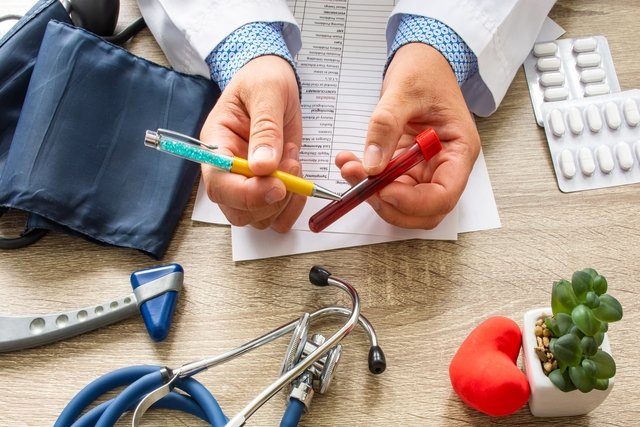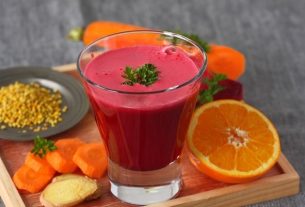The main symptoms of anemia are frequent tiredness, paler skin, lack of energy, constant headache, weak nails, dizziness and lack of appetite, for example.
Symptoms of anemia are mainly related to a decrease in the amount of hemoglobin in the blood, which is a component of red blood cells responsible for transporting oxygen throughout the body. This can happen due to a diet poor in iron, changes in iron absorption or excessive menstruation. Learn about the main causes of anemia.
It is important that the doctor is consulted in the presence of signs and symptoms indicative of anemia, as this way the doctor can identify the cause of the anemia and indicate the most appropriate treatment, which may involve changing eating habits and/or taking an iron supplement, for example. Find out how anemia is treated.

Anemia symptoms
The main symptoms of anemia are:
- Frequent tiredness;
- Paleness of the skin, gums and inner part of the eye;
- Lack of willingness;
- Constant headache;
- Weak nails and hair;
- Lack of appetite;
- Memory problems or difficulty concentrating;
- Desire to eat things that are not edible, such as bricks or dirt, for example;
- Dizziness;
- Change in heartbeat, in some cases.
In the presence of signs and symptoms of anemia, it is important to consult your general practitioner so that an evaluation can be carried out and blood tests can be recommended to help confirm the diagnosis and, thus, be able to start the most appropriate treatment. See more about anemia.
Symptom Test
If you think you may have anemia, select the following signs and symptoms to know your risk:
The symptom test is only a guidance tool and does not serve as a diagnosis or replace a consultation with a general practitioner.
How to confirm anemia
To confirm anemia, it is necessary to do a blood test to assess hemoglobin levels. In addition, the doctor may also recommend tests to assess the levels of iron, vitamin B12 and folic acid in the blood, as well as tests that help assess the functioning of the liver and kidneys. Know all the tests recommended to confirm anemia.
Hemoglobin values that indicate anemia vary according to age and whether the woman is pregnant or not. Anemia is considered when blood hemoglobin levels are less than 12 g/dL in women, less than 13 g/dL in men and below 11 g/dL in pregnant women.
Make an appointment with your nearest doctor to assess the possibility of anemia:
Taking care of your health has never been easier!
How to combat anemia
Anemia treatment is usually done by increasing the consumption of foods rich in iron, such as red meat, beans and beets, and, in more serious cases, the doctor may also recommend the use of iron supplements or a blood transfusion.
1. What to eat
To combat anemia, it is important to eat more iron-rich foods, such as red meat, organ meats, such as liver and heart, chicken, fish, seafood, spinach, broccoli and pumpkin seeds. Learn how to eat more iron-rich foods.
Furthermore, it is also recommended to eat, preferably at the same meal, foods that are sources of vitamin C, such as cashews, acerola, pineapple and guava, which help to increase the absorption of iron in the body. See a list of foods rich in vitamin C.
2. Iron supplement
For the treatment of moderate or severe anemia, the doctor may recommend the use of an elemental iron supplement, such as ferrous sulfate, ferrous gluconate or iron hydroxide as follows:
- Children under 5 years old: 3 mg of iron / kg of body weight per day, for 3 months;
- Adults: 120 mg of iron per day for 3 months;
- Pregnant women: 60 mg of iron, twice a day, until hemoglobin levels normalize.
For better iron absorption, the supplement should be taken with lunch or dinner, preferably with a citrus fruit, such as orange, lemon or tangerine.
Bibliography
- WORLD HEALTH ORGANIZATION. Haemoglobin concentrations for the diagnosis of anaemia and assessment of severity. 2011. Available at: <https://apps.who.int/iris/bitstream/handle/10665/85839/WHO_NMH_NHD_MNM_11.1_eng.pdf?sequence=22&isAllowed=y>. Accessed on 21 Dec 2021
- MINISTRY OF HEALTH AND SOCIAL SECURITY – UNICEF. Iron and folic acid supplementation protocol, vitamin “A” and fortification with vitaferro. 2019. Available at: <https://www.minsaude.gov.cv/index.php/documentosite/direcao-nacional-de-saude/programa-nacional-de-nutricao-saude-oral-e-escolas-promotoras- da-saude/540-protocolo-de-suplmentacao-em-ferro-folico-vitamina-ae-fortificacao-com-vitaferro/file>. Accessed on 21 Dec 2021
- MINISTRY OF HEALTH. National Iron Supplementation Program General Conduct Manual. 2013. Available at: <https://bvsms.saude.gov.br/bvs/publicacoes/manual_suplementacao_ferro_condutas_gerais.pdf>. Accessed on 21 Dec 2021

Sign up for our newsletter and stay up to date with exclusive news
that can transform your routine!
Warning: Undefined array key "title" in /home/storelat/public_html/wp-content/plugins/link-whisper-premium/templates/frontend/related-posts.php on line 12
Warning: Undefined array key "title_tag" in /home/storelat/public_html/wp-content/plugins/link-whisper-premium/templates/frontend/related-posts.php on line 13



